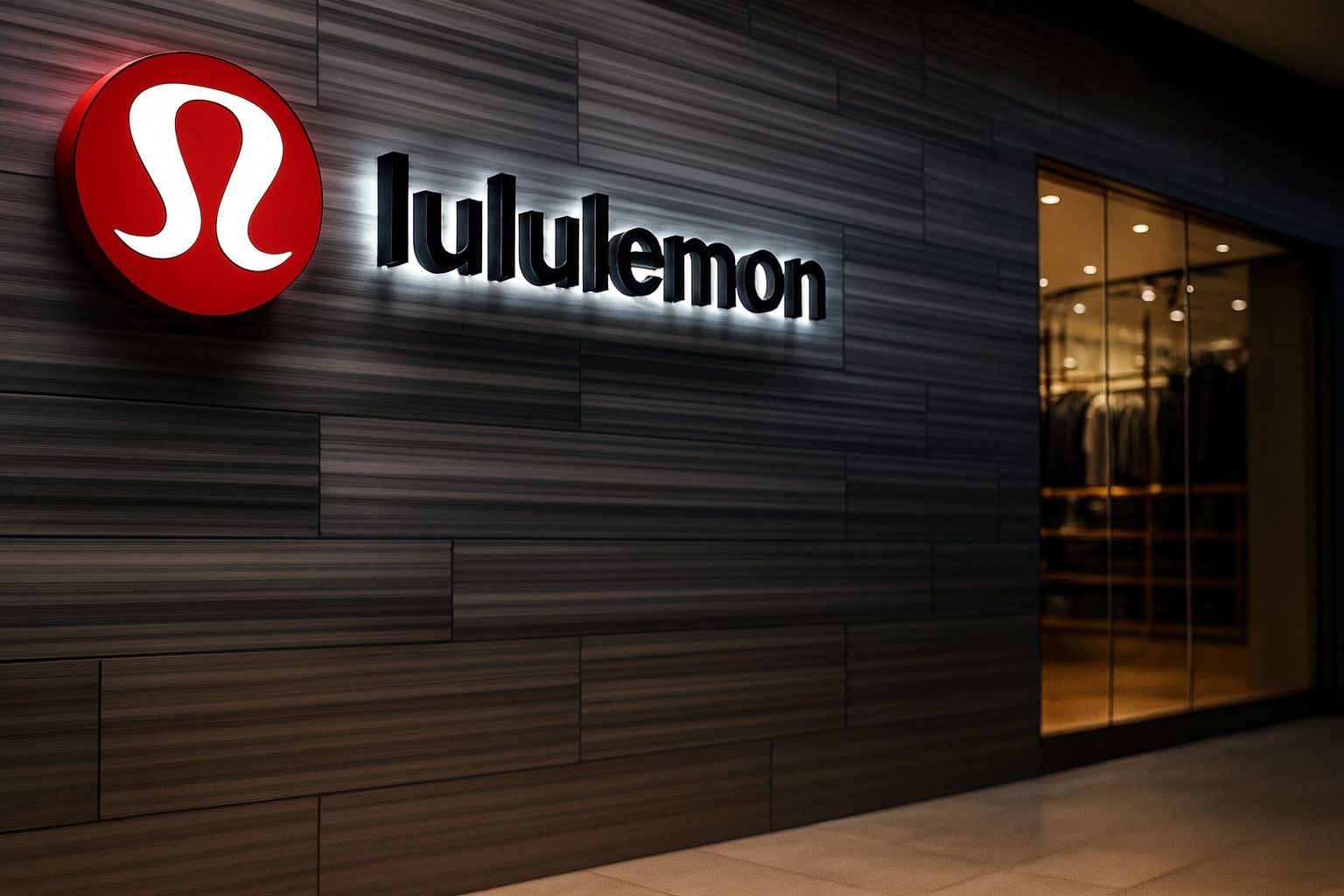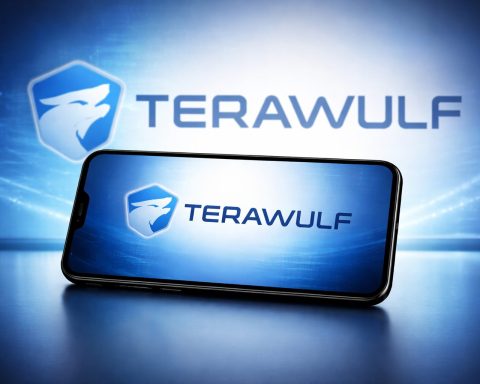Lululemon announced its first-ever NFL apparel collection on Oct. 27, sending shares up ~5% in premarket trading [1]. Founder Chip Wilson publicly called for a board overhaul and hinted at activist involvement [2]. Major analysts have cut their targets (Bernstein now $190, Morgan Stanley $185) on weak U.S. trends [3] [4]. The stock closed around $178.17 on Oct. 24 [5] (down ~53% YTD [6]) and jumped toward ~$189 by Oct. 27 pre-market. Lululemon’s P/E is only ~12×, well below the luxury retail norm, suggesting it may be heavily undervalued [7] [8].
NFL Partnership Sparks Rally
On Oct. 27 Lululemon disclosed a partnership with the NFL to launch a new apparel line – the first time Lululemon has produced officially licensed NFL merchandise [9] [10]. The collection (debuting Oct. 28) features men’s and women’s clothing and accessories with all 32 NFL team logos. Reuters notes this deal “sent shares up about 5% in premarket trading” [11] as investors cheered the fresh revenue stream. The stock had been trading near $160–$170 through mid-October, but the NFL announcement helped push it sharply higher.
Founder Activism and Corporate Challenges
Lululemon’s founder, Chip Wilson, has also been in the spotlight. In a recent CNBC interview, Wilson – who owns ~8% of the company – escalated his criticism of the board, saying it “systematically dismantled the business model” and signaling readiness to work with activists to force changes [12] [13]. “I think it is time for some action… I’m looking at my options,” he said, suggesting new leadership or strategy might be needed [14]. His comments follow a full-page Wall Street Journal ad blasting Lululemon’s leadership as misguided. The company pushed back in a statement, calling Wilson’s statements “inaccurate and misleading” and affirming confidence in its growth plans [15]. Regardless, Wilson’s high-profile campaign highlights the pressure on Lululemon to demonstrate a turnaround.
Wall Street Views & Valuation
Analysts’ sentiment toward Lululemon is mixed. Bernstein downgraded LULU to Market Perform with a $190 target (down from $220), citing deteriorating U.S. sales and uncertainty around Lululemon’s “newness” strategy [16]. Morgan Stanley similarly cut its price target to $185, warning that without a clear catalyst the company’s valuation could “permanently [relegate] to the Specialty Apparel Retail range” [17]. On the other hand, BNP Paribas Exane noted most negative news is already priced in and upgraded LULU to Neutral (target $146), pointing to potential catalysts like the AmEx Platinum partnership and even founder activism [18]. The average consensus 12-month target is around $195, suggesting limited upside in the near term [19].
Despite the pessimism, many data models flag Lululemon as undervalued. Simply Wall St’s analysis finds the stock trading at a P/E of 11.8× versus a “fair” 17.2×, and their DCF model gives an intrinsic value ~$255, about 30% above recent prices [20] [21]. Similarly, Validea’s screens rate Lululemon highly (93%) for durable growth and diversified sales channels [22]. These metrics suggest the stock may be oversold if the company can return to growth. As one TS2.tech analysis put it: “Lululemon … has fallen ~60% from its January peak, but two bullish signs the bottom may be in” include price stabilizing around key support levels and indicators flipping from oversold [23]. (The flip side is that the long-term trend remains “ugly,” with P/E falling from ~30× to ~12×, underscoring risk if profits continue to erode [24].)
Stock Performance and Outlook
As of Oct. 24, LULU closed near $178.17 [25], roughly flat in the past week but sharply down from its $206 peak in early September [26] [27]. In the last month the stock has held steady – up about +2% despite the year’s selloff – implying some investors may already be willing to buy at these levels [28]. The Motley Fool notes the stock now trades at roughly 12× forward earnings, “far below what it has averaged in the past,” which could signal value if growth returns [29].
Looking ahead, much depends on whether Lululemon can convert new initiatives into sales. The company is expanding internationally (China sales grew +24% in constant currency last quarter [30]) and focusing on new products and partnerships. Analysts like BTIG’s Janine Stichter still carry lofty $300+ targets, betting on a long-term rebound [31]. But most agree it’s a “wait-and-see” story: without proof of improved traffic or pricing power, Lululemon could languish near these lows. Industry peers in footwear and apparel are also warning of tariff pressures and cautious consumers [32], suggesting LULU may not be alone in facing tough conditions.
Forecast: In the short term, expect volatility. The stock’s recent gains on the NFL news are encouraging but not yet sustainable proof of recovery. Over 6–12 months, key drivers will be holiday sales trends, clarity on U.S. consumer demand, and any tangible progress from Lululemon’s strategic pivots (like new product lines and marketing collaborations). If management can deliver growth or limit losses in core markets, many analysts see room for significant upside from current levels; conversely, continued underperformance could push the stock down toward the $150–160 range again. For now, LULU remains a high-risk, high-reward play – heavily beaten down by 2025’s turmoil, but with brand strength and international growth potential that some experts think make it worth a speculative bet [33] [34].
Sources: Recent coverage from Reuters, Motley Fool/Nasdaq, financial news outlets and analysis sites [35] [36] [37] [38], plus market data from Yahoo Finance and TS2.tech summaries [39] [40].
References
1. www.reuters.com, 2. au.investing.com, 3. intellectia.ai, 4. intellectia.ai, 5. stockanalysis.com, 6. www.nasdaq.com, 7. simplywall.st, 8. www.nasdaq.com, 9. www.reuters.com, 10. www.reuters.com, 11. www.reuters.com, 12. au.investing.com, 13. au.investing.com, 14. au.investing.com, 15. au.investing.com, 16. intellectia.ai, 17. intellectia.ai, 18. intellectia.ai, 19. intellectia.ai, 20. simplywall.st, 21. simplywall.st, 22. ts2.tech, 23. ts2.tech, 24. ts2.tech, 25. stockanalysis.com, 26. stockanalysis.com, 27. stockanalysis.com, 28. www.nasdaq.com, 29. www.nasdaq.com, 30. ts2.tech, 31. ts2.tech, 32. ts2.tech, 33. simplywall.st, 34. ts2.tech, 35. www.reuters.com, 36. www.nasdaq.com, 37. au.investing.com, 38. simplywall.st, 39. stockanalysis.com, 40. ts2.tech









